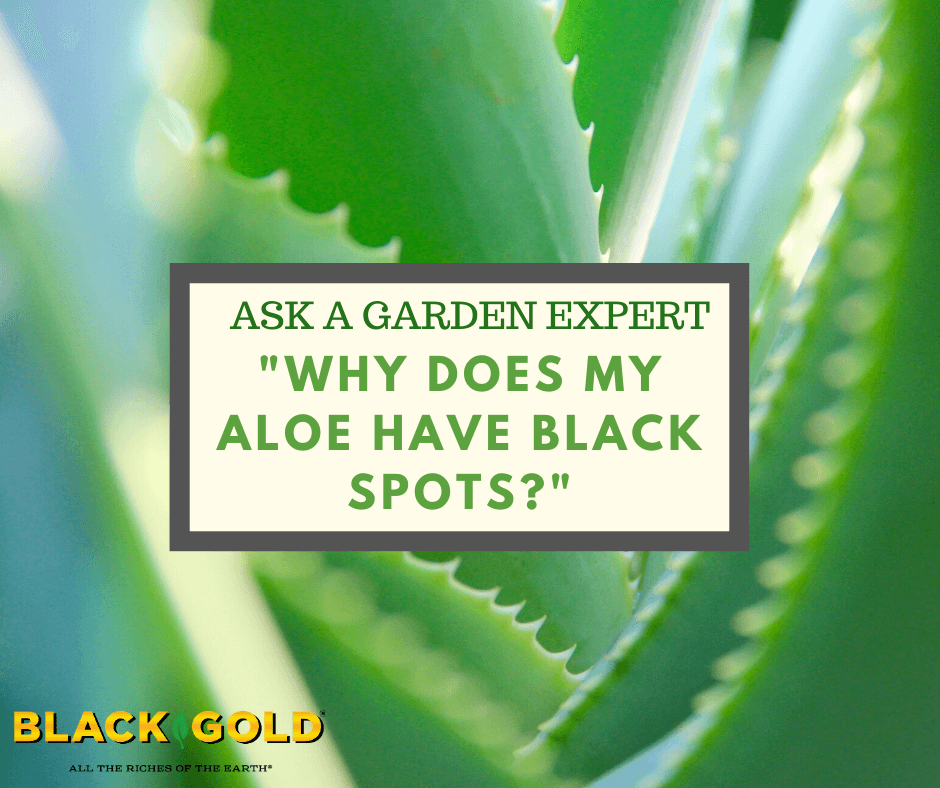
“We live in South Florida (Miami). My daughter-in-law has planted an aloe plant in the ground. It’s growing nicely but has black spots on it. Should she be concerned?” Question from Brenda of Miami, Florida
Answer: Florida rains are too much for succulent Aloe (Aloe vera). It is a dryland plant from the Arabian Peninsula that is best suited for cultivation in Southern California and the American Southwest in the US. It requires dry, fast-draining soil, once established. Too much moisture stresses aloes and invites fungal disease. Black spots on the leaves are due to fungal disease, but there are several things you can do to stop its spread.
To grow aloe well where you live, it should be potted. Before potting up your aloe, remove the worst of the infected leaves; just cut them off. Choose a pot big enough to accommodate its root system that has drainage holes at the bottom. Your aloe will need very fast-draining soil, such as Black Gold Cactus Mix. When you are ready to transplant, dig the aloe from the soil, remove the excess soil from its roots, and plant it in the pot with fresh mix. Finally, water it in lightly, and once its foliage is dry, spray it with a natural & organic, copper-based fungicide (click here for an example).
Place your potted aloe in a sunny to partially sunny spot under an eave or covered patio where it will not get rain. This will allow you to water it as needed. I recommend watering no more than twice a month, and water it from the base while being sure to keep its foliage dry.
From there, your aloe should thrive!
Happy gardening,
Jessie Keith
Black Gold Horticulturist


